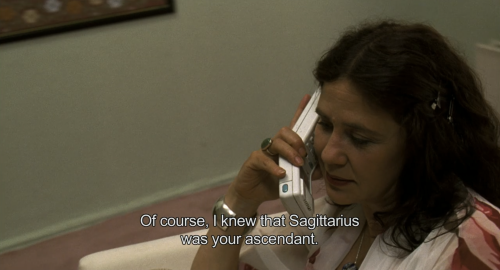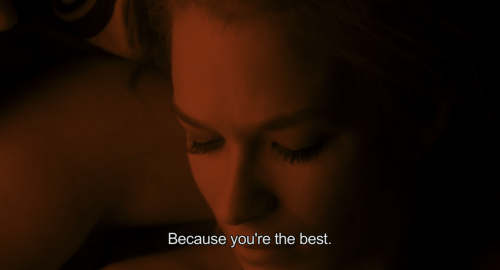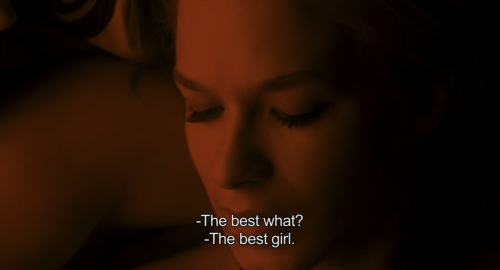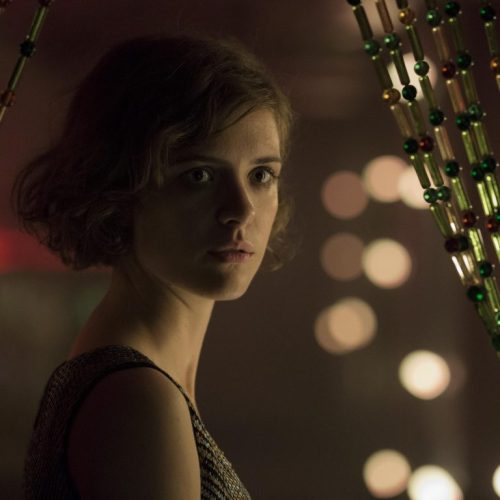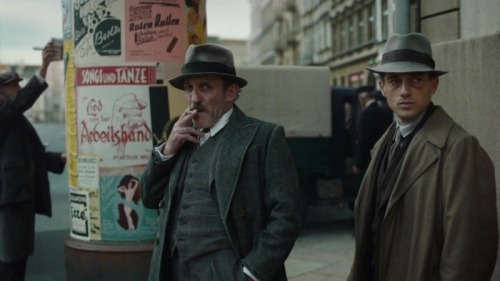#tom tykwer




Paris, je t’aime (2006)
MISS DIOR - The new Eau de Parfum (2017)
What would you say to a Raymond Chandler-style murder mystery set in 1920s Germany that stars Volker Bruch (a subtle genetic blend of a Young Dennis Hopper and Montgomery Clift) as a PTSD-addled cop, and cute little Lisa Fries as a Weimar-era Nancy Drew? And done on a budget that would embarrass all of Hollywood combined, and crafted with attention to absurd, gorgeous detail that makes Wes Anderson seem carefree.
Hold that notion for a moment.
Babylon Berlin’s noir-infused narrative crawls alongside Germany’s rise to power, which we’ve seen in various productions dozens of times. But rather than stern drama, it’s instead a massive-scale fantasia (the most expensive television production in history) that employs the tropes and features of musicals, surrealism, police procedural, occult mystery, and cliffhanger serials.
Whole episodes seem at times solely devoted to offering brief devotions on the topics of architecture, psychoanalysis, fanaticism, JugendstilArt Deco, surrealism, or cinema itself. But it’s all done as a delirious (if grim) visual tour, as opposed to a lecture.
I’m not doing the series justice here. Bear in mind that this is a Tom Tykwer project, and it revisits the imaginative, perverse energy of his Run Lola RunandWinter Sleepers work. It gets weirder and broader than all that, by far.
The aesthetic and vibe bring to mind Werner Herzog re-doing the entire “Avengers” British television series of the 1960s as a tribute to Fritz Lang and Neitzsche, or Paul Thomas Anderson reimagining Cabaret as one big episode of “Law & Order.”
It should be seen on a huge HD screen. Just wait until you get a load of the Hermann PlatzandRosenthaler Platz U-Bahn stations, or the Rotes Rathaus city hall on Alexanderplatz. It’s almost like the very sets and structures are characters in this bizarre, heartbreaking story.
Thanks to this series, I’ve had Roxy Music’s “Dance Away” in my head for the past few weeks. No, not the version we all grew up with. I mean the jazz age, klezmer-esque, Kurt Weill-ish version that—with a kind of reverse hauntology—woozily snakes its way through this mesmerizing, almost indescribable tale.
That song is about escaping the heartache of betrayal by getting lost in a pleasant diversion, to the point of obsession. That’s how romance and dating turn out sometimes. Babylon Berlin is about escaping betrayal and heartache because, well, that’s how history and culture turn out sometimes.
In 1920s Berlin, the dancing, along with numerous other diversions that are as perverse, frenetic, dark, and addictive as they want to be, take place in clubs and bars and brothels. Other folks are dancing in the streets, so to speak, in brutal clashes between numerous, barely distinguishable factions of Communists, Social Democrats, and the Berliner Polizist cops. There’s also a group of Trotskyites who can’t catch a break, and countless dual loyalties among Right and Left wings complicating the internecine fights that plague each political group. (Yes, the series does call for a Weimar politics flow chart at times.)
Most intriguing is that there’s hardly a Nazi to be found in the mix, unless you count the occasional dust-up with a few dozen Sturmabteilung bullies (those clumsy lads in sad, military-surplus brown shirts and little red arm bands).
There does seem to be a larger, more organized group waiting in the wings. Bunch of resentful holdovers from the First World War. Old, humorless guys in quite striking forest-green felduniform. Sure, it’s an army, but everyone in Germany in 1928 knows there aren’t going to be any more wars; that’s verrückttalk.
Speaking of crazy, the series has the main character’s mental illness, in the form of post-traumatic stress, function as a metaphor for the Weimar zeitgeist. It might seem like a facile reduction, especially if it were done in service to the notion that the cure is worse than the illness. But something else happens.
The close study of multiple characters in this series suggests that history may not always be guided by x-number of people getting swept up by something larger than themselves. Or by a mad leader.
Yes, a lot of folks march, shout, and fight in unison. But in this realm, major social changes are catalyzed by discrete (and often discreet), traumatic, life-altering personal histories that, solely by accident of geographical proximity, coalesce into what we would call a movement or a cause.
The world did witness the worst possible manifestations of “the madness of crowds” with what followed in Germany during the 1930s. But a deeper examination of what’s known as “the human experience” might reveal that each German was crazy alone before all of them were crazy together.
Post link

